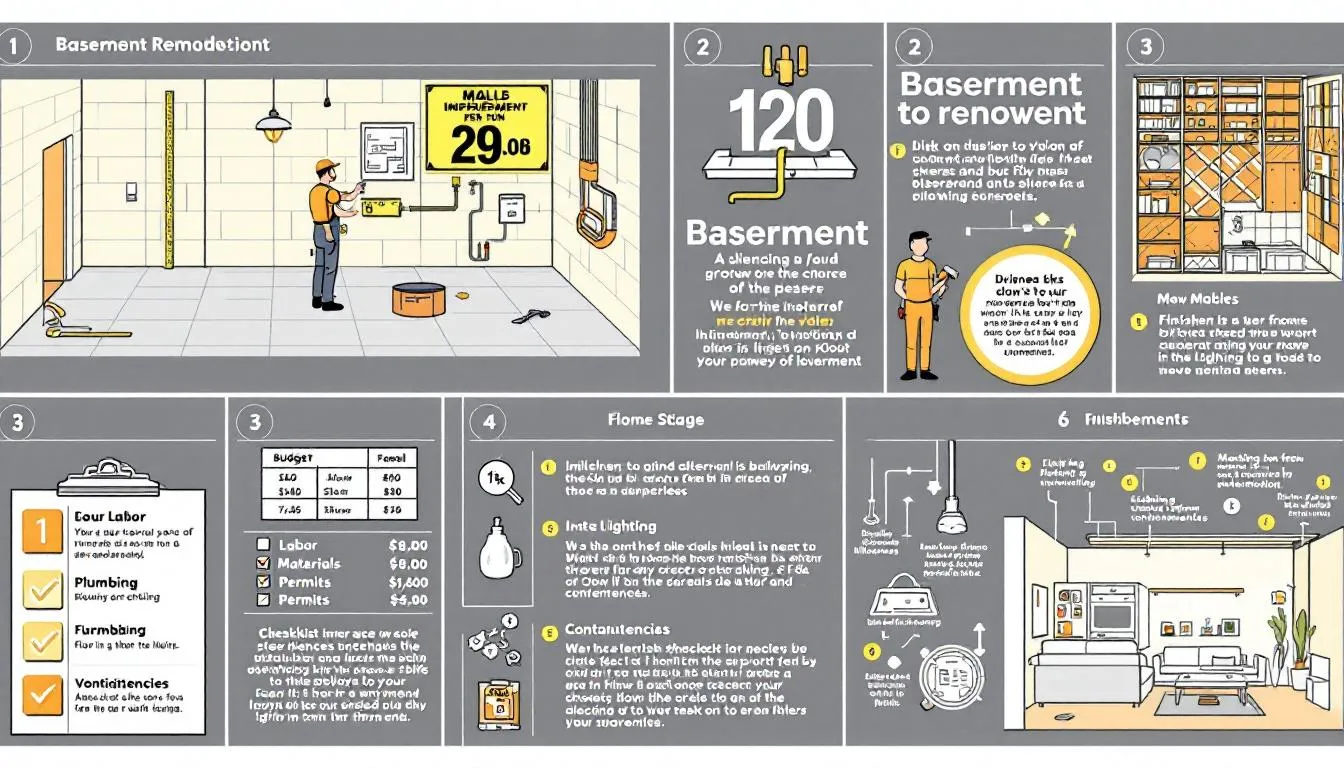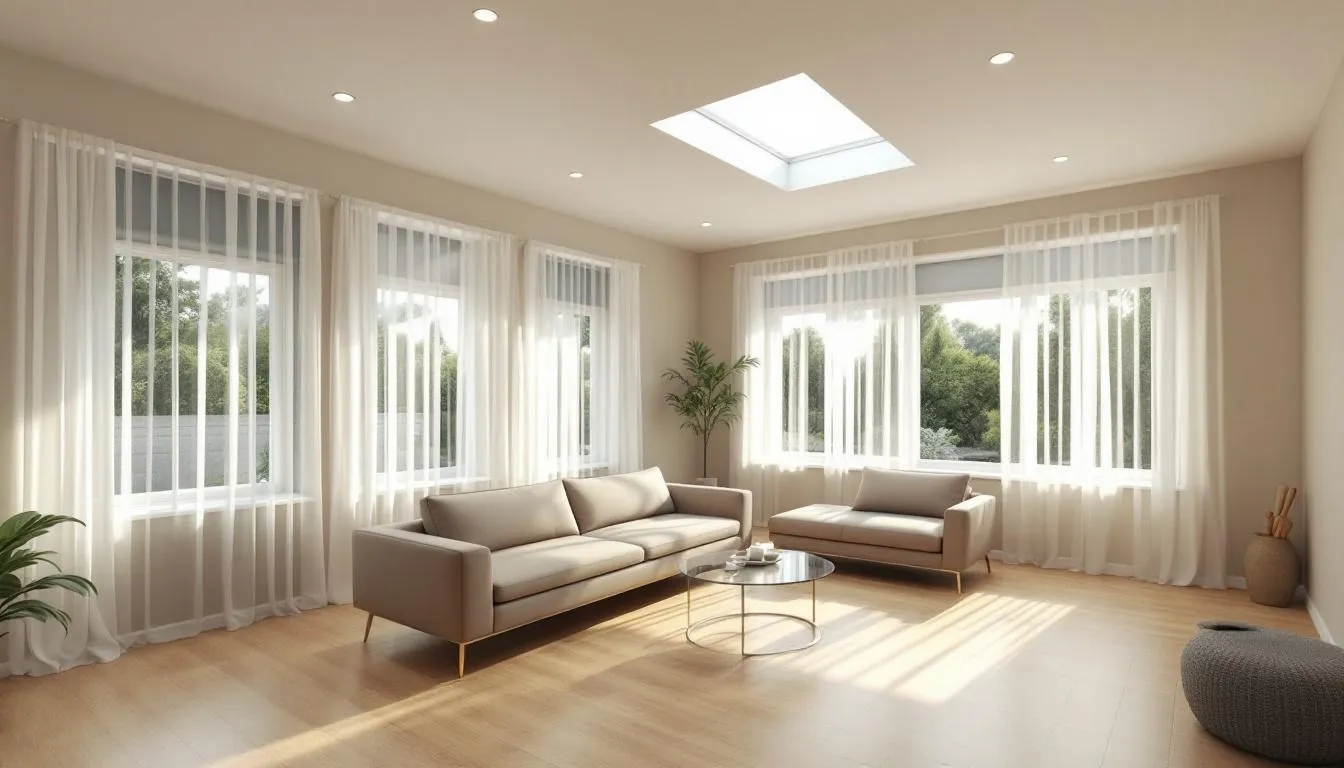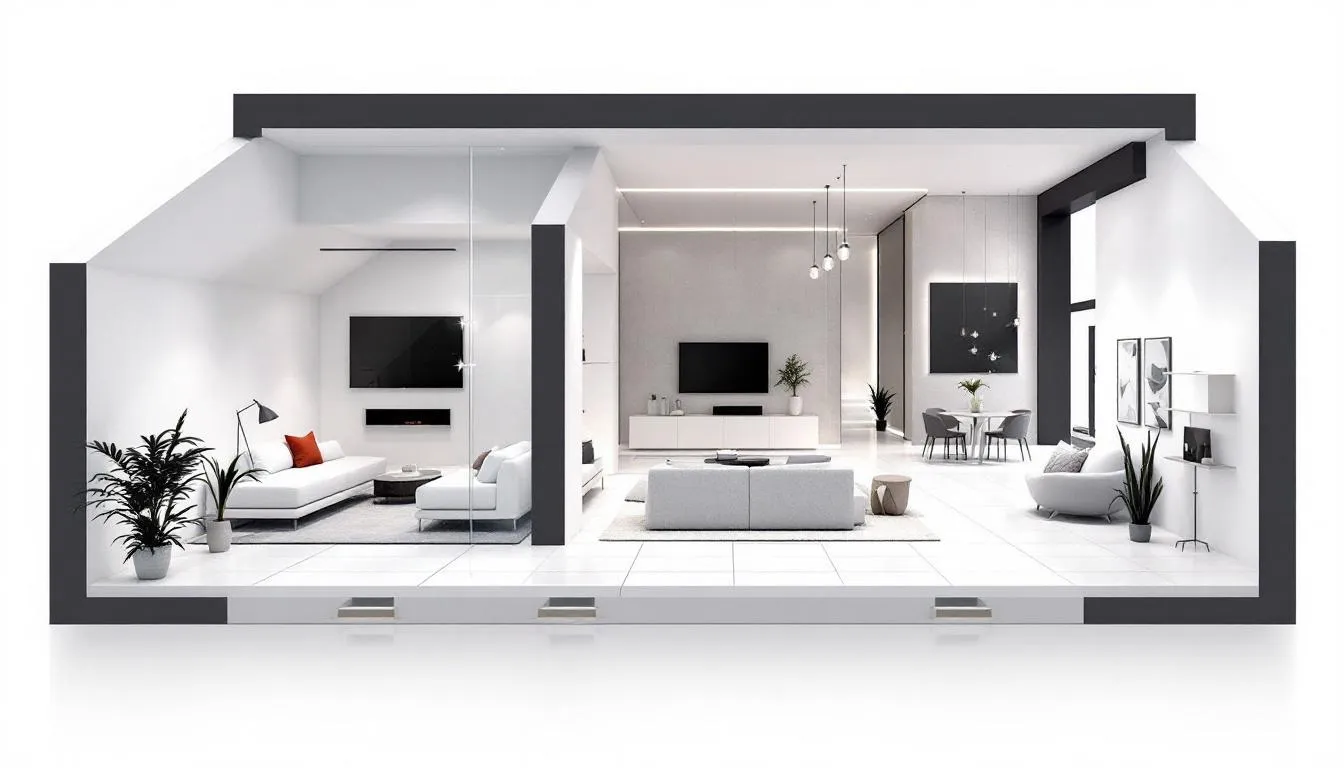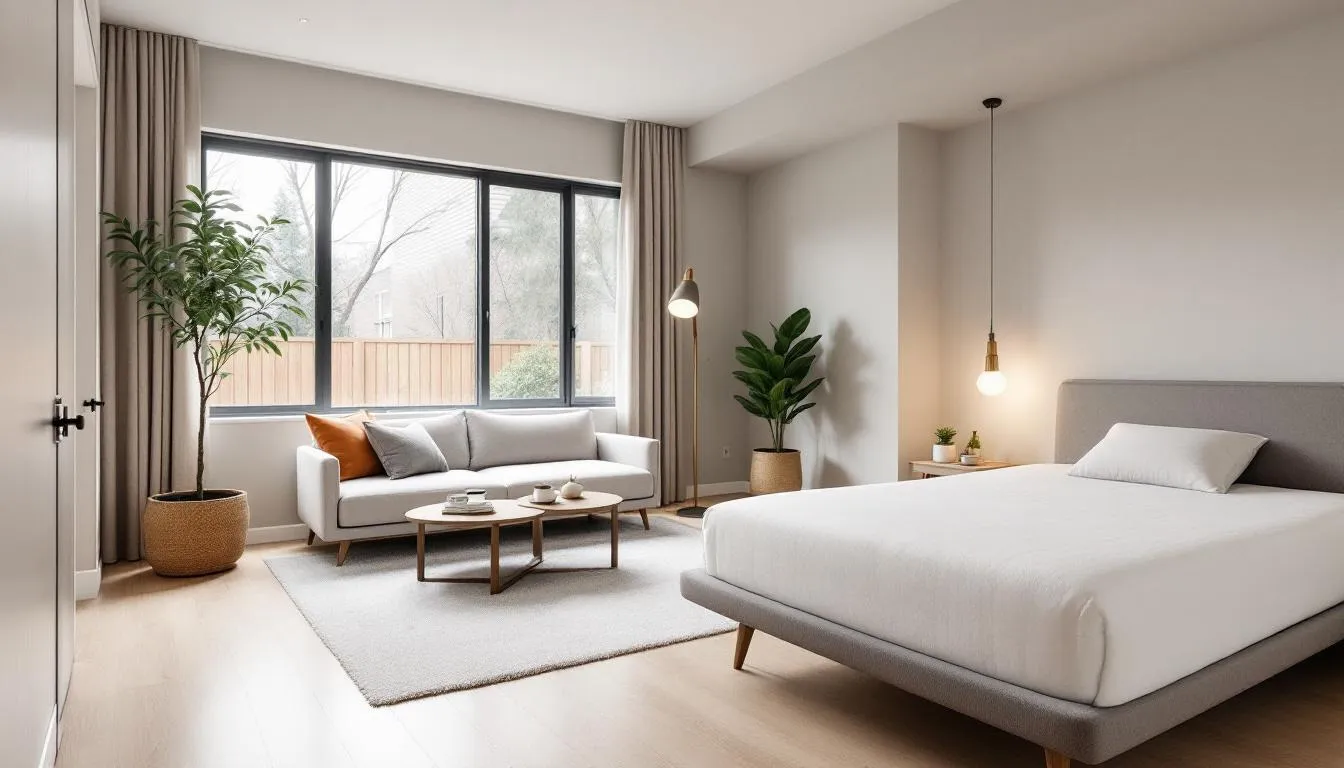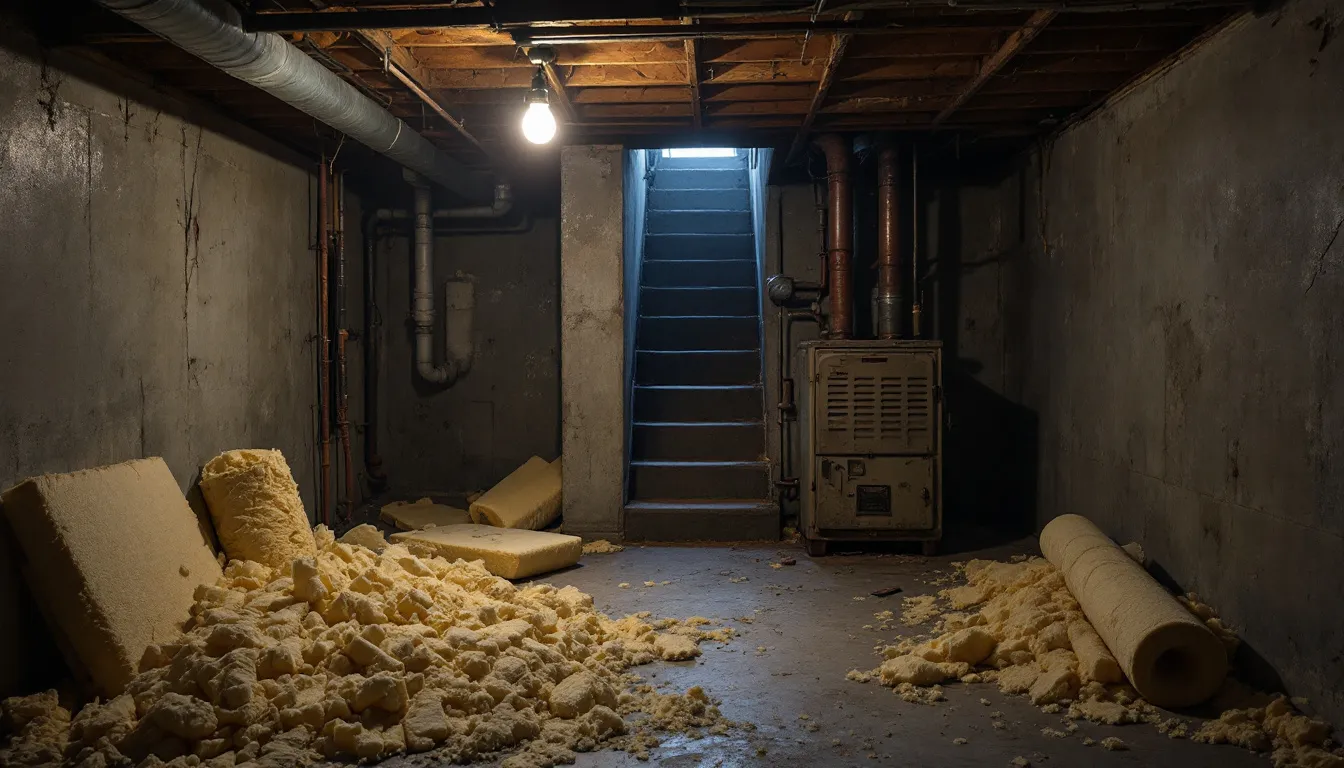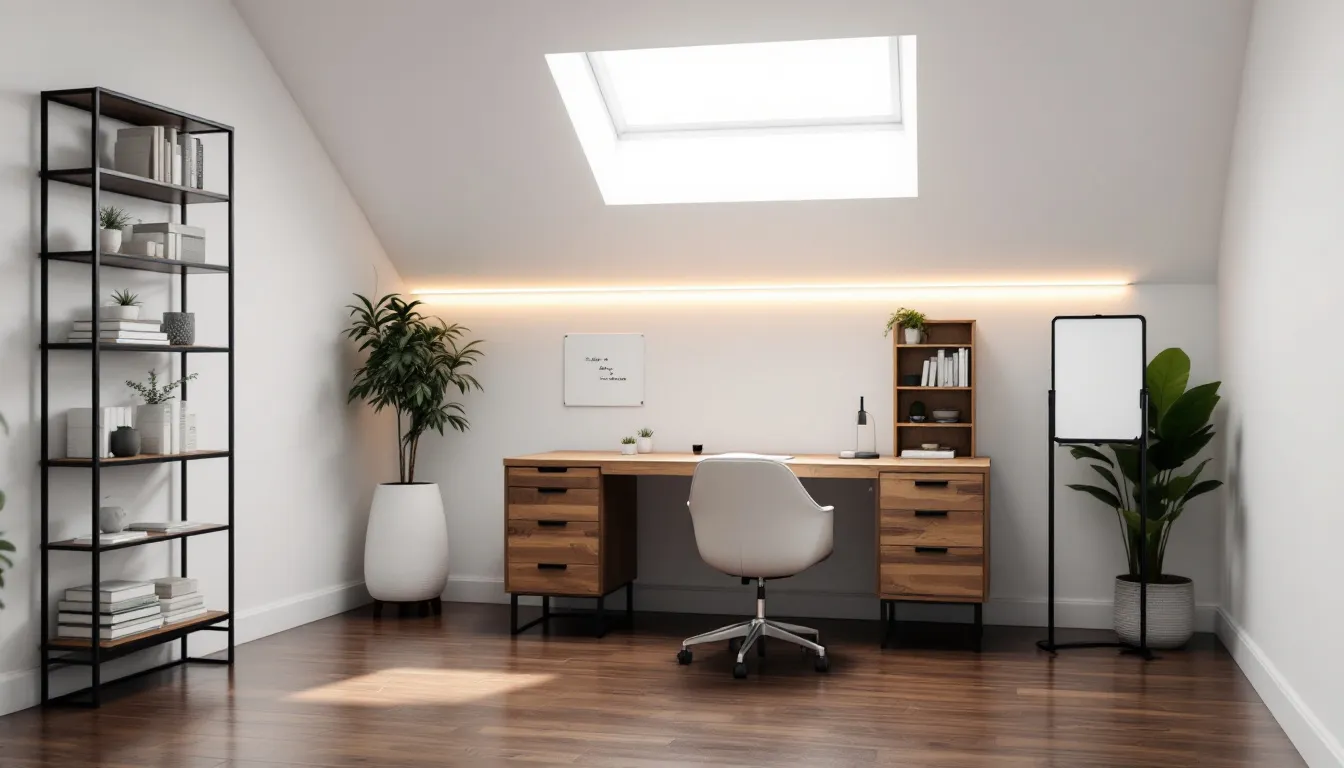Transform Your Basement into a Home Gym: A Step-by-Step Guide for Fitness Enthusiasts
Looking to transform your basement into a home gym? This “step-by-step guide” covers evaluating your space, choosing essential equipment, and setting up for safe, effective workouts to transform your basement into a home gym: a step-by-step guide. Let’s dive into creating your ideal basement gym.
Key Takeaways
- Start by evaluating your basement space, focusing on ventilation, humidity, and ceiling height to create a comfortable workout environment.
- Plan your home gym layout with designated workout zones and effective storage solutions to optimize functionality and safety.
- Choose versatile, space-saving equipment and maintain proper ventilation, lighting, and cleanliness to enhance your workout experience.
Evaluate Your Basement Space
Creating a basement gym starts with evaluating your basement space, considering factors like ventilation, humidity, and ceiling height. These elements help you determine if your basement can accommodate your workout needs. Accurate measurements of your basement dimensions are necessary to understand the room available for your gym setup.
Before setting up, check for moisture issues or inadequate ventilation, which could affect your gym environment. Identifying these problems early can save you from future headaches. Make sure to address any necessary workarounds to create a comfortable space for your workouts.
Assessing your basement involves more than just looking at the floor; it’s about ensuring the whole space can support a safe and effective workout environment. Now, let’s focus on measuring floor space and ceiling height.
Measuring Floor Space and Ceiling Height
Accurate measurements are key when designing your basement gym. Begin by measuring the entire floor space to determine room for equipment and movement. Pay close attention to ceiling height, as low ceilings can restrict exercises like overhead presses and affect the types of equipment you can install.
Consider the ‘functional footprint’ of each piece of equipment, which involves the space it occupies and the additional room needed for effective use. For example, if you’re including a squat rack, ensure enough space around it for safe and comfortable use. Knowing these dimensions helps you avoid purchasing equipment that doesn’t fit your space or limits your workout options.
Identifying Problem Areas
Identify potential problem areas such as moisture, inadequate lighting, and poor ventilation before setting up your basement gym. Moisture can lead to mold growth if not addressed, so consider using a dehumidifier to control humidity levels.
Ensure there is adequate lighting to prevent a dim and uninviting workout space. Addressing these issues creates a safe and comfortable environment for your home gym.
Planning Your Home Gym Layout
A well-planned layout is key to an efficient and enjoyable home gym. Begin by envisioning how you want your workout space to look and function, considering your personal fitness goals and the types of exercises you’ll be doing. Planning for future equipment additions can help maintain a functional and adaptable gym. Ensure clear pathways for smooth movement between different workout areas.
An organized gym promotes a more enjoyable workout experience. Designating workout zones and implementing effective storage solutions are crucial steps in creating an ultimate basement gym. Now, let’s explore these aspects in detail.
Designate Workout Zones
Creating distinct zones for different types of exercises optimizes your home gym’s functionality. Identify areas for strength training, cardio, and flexibility exercises. For instance, place your squat rack and weight benches in one zone, reserving another area for cardio equipment like a stationary bike or rowing machine.
Understanding the ‘functional footprint’ of your equipment ensures there’s enough space around each piece for safe and effective use. This approach enhances efficiency and reduces the risk of injury by preventing overcrowding.
Storage Solutions
Effective storage solutions are crucial for maintaining an organized and safe gym. Plan where larger equipment will sit or can be moved to keep the floor space clear. Use shelves, racks, bins, and wall hooks to organize your gym equipment. Vertical storage options save space and keep your workout area clutter-free.
Label storage areas to locate equipment easily and maintain organization.
Essential Equipment Selection
Choosing the right home gym equipment is key to creating a versatile and effective home gym. Identify your personal fitness goals to tailor your equipment selection to your preferred exercises. Start with versatile, space-saving gear like adjustable dumbbells and resistance bands, which can work multiple muscle groups. Home gyms can greatly enhance your workout experience.
Consider your available space and budget when selecting equipment. Compact options like resistance bands, adjustable dumbbells, and kettlebells allow you to perform various exercises even in limited spaces. Multifunctional equipment ensures efficient use of space and meets diverse workout needs, ideal for small or multipurpose areas.
Now, let’s explore specifics for strength training, cardio, and flexibility tools.
Key Equipment for Strength Training
Strength training is a cornerstone of any effective fitness routine. Essential equipment for a basement gym includes squat racks, an adjustable bench, and a pull-up station. A squat rack is crucial for safely performing heavy lifts and maximizing strength training. Consider shorter power racks like custom 72” Hydra or Manticore racks if you have low ceilings.
An adjustable bench is versatile and essential for various exercises. Adding a pull-up station offers a cost-effective way to improve workout variety. This combination of equipment provides a solid foundation for your strength training needs.
Cardio Equipment Options
Cardio is equally important for a balanced fitness routine. Air bikes, rowers, and manual treadmills are compact cardio machines. They are excellent choices for basement gyms with limited space. Air bikes, in particular, are effective for high-intensity interval training.
A stationary bike is also a great option for those who enjoy cycling and have space constraints. Stationary bikes can provide a similar experience.
Flexibility and Recovery Tools
Flexibility and recovery tools are essential for a well-rounded fitness routine. A good yoga mat provides a comfortable surface for stretching and foundational exercises. Yoga mats and foam rollers are crucial for muscle recovery and improving flexibility after workouts.
Resistance bands are versatile tools easily incorporated into various stretching and recovery routines.
Flooring and Protection
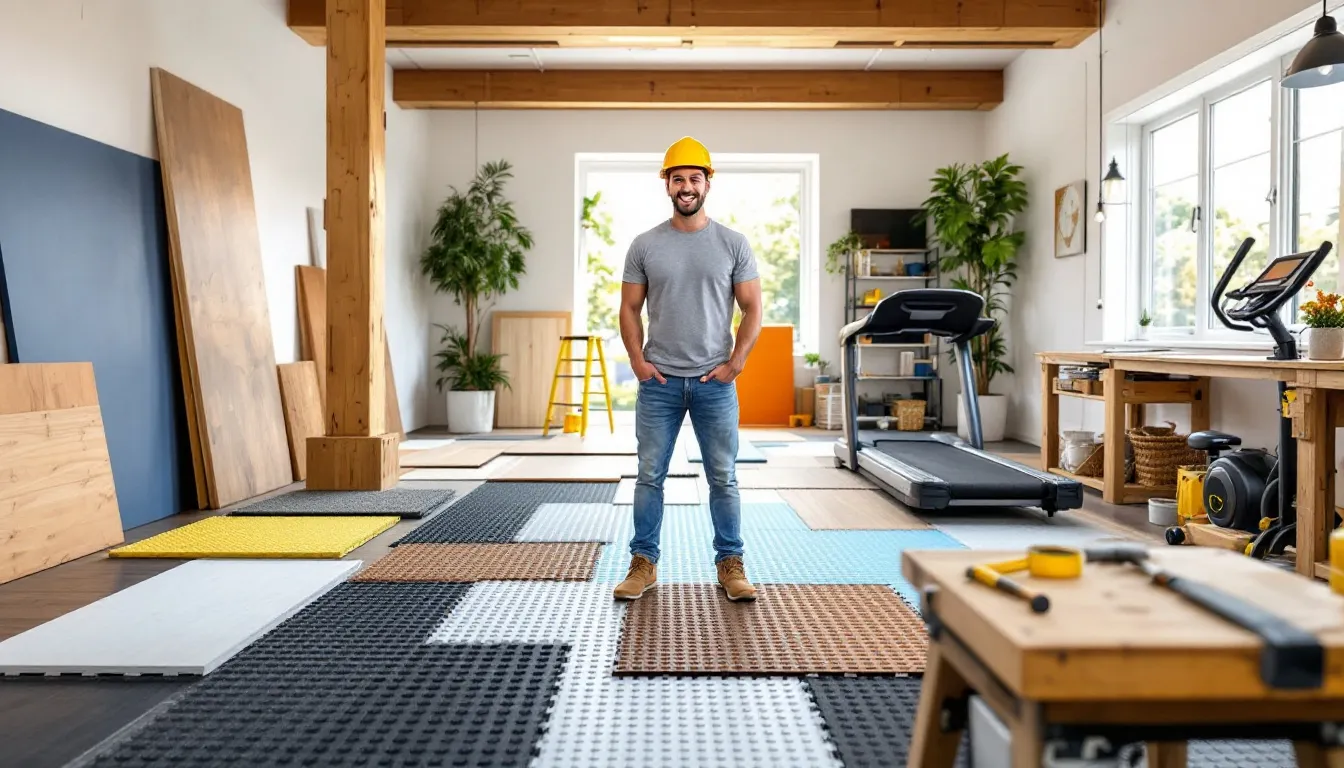
Specialized flooring in a basement gym enhances workout safety and performance by providing stability and cushioning. Interlocking tiles and rubber mats are popular choices due to their durability and easy installation. These flooring options can be configured to fit different workout spaces and withstand heavy impacts.
Now, let’s explore the benefits of rubber mats and interlocking tiles in detail.
Rubber Mats and Horse Stall Mats
Rubber mats and horse stall mats provide shock absorption and protect the floor during intense workouts. These mats offer stability and grip, significantly enhancing workout performance.
Horse stall mats, typically 3/4 inch thick, are a durable choice for gym flooring and can define specific workout zones.
Interlocking Tiles
Interlocking rubber flooring tiles are a great flooring alternative for a basement gym. They prevent shifting during heavy lifts and ensure a stable workout surface. Foam tiles might not be suitable for heavy lifting or high-intensity exercises.
Interlocking tiles are easy to install and can be arranged to fit various workout space configurations.
Ensuring Proper Ventilation and Airflow
Proper ventilation and airflow are crucial for maintaining air quality in your basement gym. Poor air quality can lead to stale air being re-breathed, which isn’t ideal for workouts. High humidity can promote unpleasant odors and mold growth, making it essential to control moisture levels. Adding ventilation ducts and using fans can help circulate fresh air.
To enhance airflow, check for openable windows or space for a fan. Using a dehumidifier effectively controls moisture levels, creating a healthier workout environment. Now, let’s delve into the specifics of installing fans and dehumidifiers, and utilizing windows and air conditioning.
Installing Fans and Dehumidifiers
Proper airflow is essential for maintaining comfort and preventing musty odors. Installing a fan and opening windows while working out can improve air circulation. Controlling humidity levels with a dehumidifier avoids dampness and creates a healthier environment.
An air conditioning unit can also help manage moisture levels effectively.
Utilizing Windows and Air Conditioning
Utilizing windows can significantly improve the ambiance of a basement gym by allowing natural light. Sealing gaps in insulation helps maintain temperature control. For basements without windows, using an air conditioning unit or dehumidifier can control temperature and humidity.
Portable air purifiers can also help filter out allergens and dust, improving air quality.
Lighting Solutions for a Bright Workout Space

Proper lighting is crucial for safety and creating an inviting workout space. Good lighting makes the gym feel larger, brighter, and more motivating. LED lights are recommended for basement gyms due to their brightness and energy efficiency. They come in various temperatures, allowing for customized lighting options.
Now, let’s explore LED lighting options and ways to enhance natural light in your basement gym.
LED Lighting Options
LED lights are energy-efficient options providing bright illumination, enhancing visibility during workouts. Linkable LED strips can be customized to fit different areas of the basement gym, making them a versatile lighting solution.
Consider using LED lights for overhead lighting to ensure your workout space is well-lit and safe.
Enhancing Natural Light
Utilizing windows can significantly improve the ambiance of a basement gym by allowing natural light. Natural light reduces reliance on artificial lighting during daytime workouts and can make the space feel more inviting.
Consider using light colors and a bold accent wall to brighten the space and create a focal point.
Personalizing Your Fitness Space
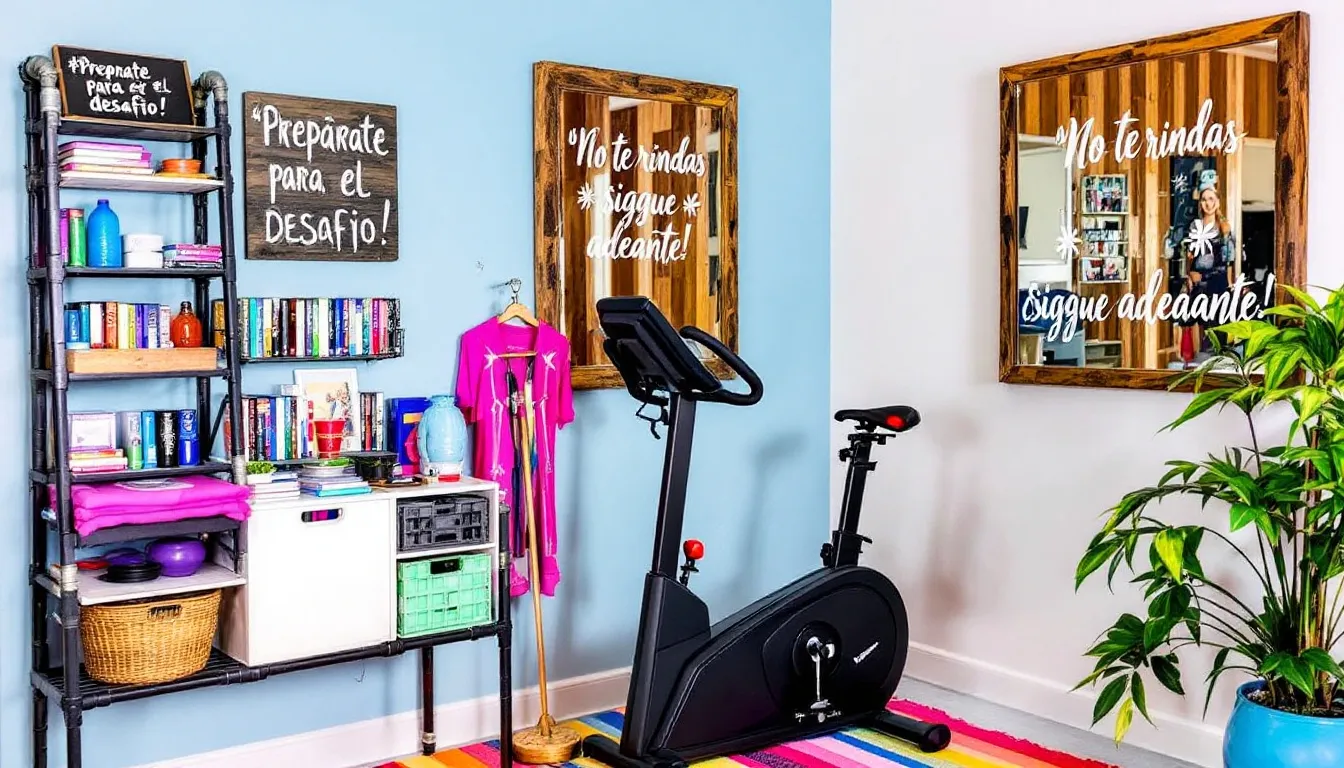
Personalizing your fitness space makes it more inviting and motivating. Good illumination enhances motivation and energy levels in a gym environment. Use dimmable lighting for adjustable brightness, enhancing the workout environment. Decorate with art, color, and plants to create a visually appealing and organized space. Incorporating personal elements like artwork can boost motivation.
Let’s discuss wall décor, mirrors, and color schemes in detail.
Wall Décor and Mirrors
Mirrors are essential in gyms for checking form, tracking progress, and making the space feel larger and more motivating. Use mirror clips and high-quality mounting accessories to ensure they are securely installed.
Position mirrors strategically to allow unobstructed form checking, such as placing a single mirror behind or beside the main workout area. Incorporate wall décor like motivational posters or frames to create an inviting atmosphere.
Color Schemes and Themes
Energizing colors like blues, greens, or bold accent walls can create a motivating gym environment. Bright bold colors or soft pastel hues enhance the ambiance of a home gym, making it a more enjoyable and inviting space for your workouts.
Safety and Maintenance Tips
Regular maintenance and cleanliness are essential for ensuring safe workouts and prolonging the life of your gym equipment. Establish a routine maintenance program that includes inspecting equipment for wear and tear, tightening loose parts, and testing functionality. Keeping your gym clean and organized prevents accidents and encourages regular workouts.
After each use, organize your gym equipment to ensure easy access and maintain safety by preventing tripping hazards. Establish a cleaning schedule to regularly wipe down equipment, vacuum the gym area, and maintain a clutter-free environment.
Let’s explore regular equipment maintenance and cleaning in more detail.
Regular Equipment Maintenance
Regular maintenance is necessary for keeping your gym equipment in optimal condition. Using specialized cleaning products helps maintain mirror clarity and overall gym cleanliness. Extreme heat, cold, and moisture can damage gym equipment, so monitor these environmental factors carefully.
Storing gym equipment in a basement helps it last longer and age slower due to a more controlled environment.
Cleaning and Organization
Establishing a cleaning schedule ensures that the gym remains organized and clutter-free. Daily cleaning routines, such as wiping down equipment after use, can prevent the buildup of sweat and bacteria.
Maintaining a clean and clutter-free gym is essential for encouraging regular workouts and efficiency.
Assembling Your Home Gym
Assembling your home gym requires careful planning to ensure safety and functionality. Moving large equipment into the basement can be challenging, so ensure pieces can fit through doors or downstairs. Position equipment to allow safe movement and enough operating space. Regular maintenance of gym equipment is essential to enhance its longevity and performance.
Following the manufacturer’s assembly instructions is crucial to ensure the equipment is put together correctly and safely. For larger or more complex machines, consider hiring professionals to prevent potential damage to your home and equipment during installation.
Following Assembly Instructions
Always read the owner’s manual and follow the manufacturer’s assembly instructions carefully. Check for missing parts before starting the assembly process to avoid interruptions.
Reputable retailers often offer professional installation and setup for large gym machines, ensuring they are assembled correctly and safely.
Professional Installation for Large Machines
Consider hiring professionals for installing large or complex gym machines. Professionals can prevent potential damage to your home and equipment during installation, ensuring everything is set up correctly and safely.
Summary
Transforming your basement into a home gym is a rewarding project that offers convenience, flexibility, and a personalized workout environment. From evaluating your basement space to planning the layout, selecting the right equipment, and ensuring proper ventilation and lighting, each step is crucial to creating an ultimate basement gym. By following this guide, you can create a safe, functional, and motivating fitness space that supports your personal fitness goals. Now, it’s time to take action and start building your dream home gym!
Ready to work with Basement Remodeling Long Island?
Let's connect! We’re here to help.
Send us a message and we’ll be in touch.
Or give us a call today at 646-801-1701
Agency Contact Form
More Marketing Tips, Tricks & Tools
